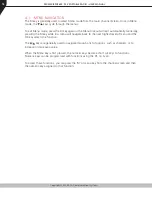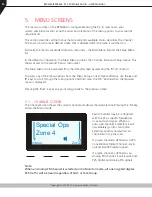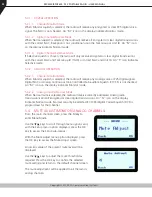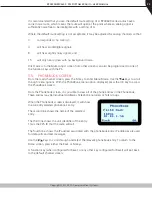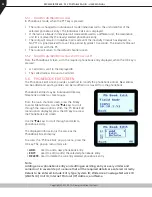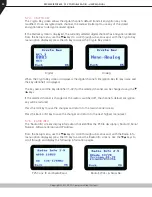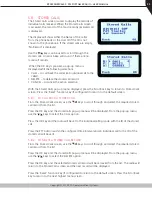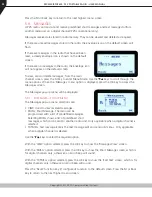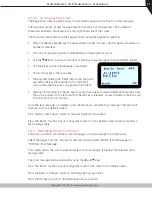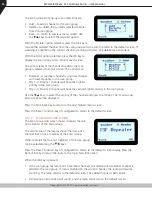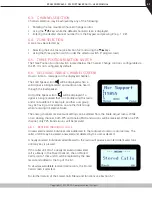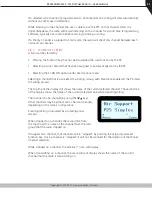
Copyright © 2015 RCA Communications Systems
RPX4500/RPX4600 P25 PORTABLE RADIO – USER MANUAL
32
5.7.6. MODE
The Mode menu is used for changing from one radio to another, such as PMR/LMR mode to P25
or MPT1327 trunking.
From the Setup menu, use the / keys to scroll through the sub- menus and, with the Mode
menu option displayed, press the OK key to access the Mode screen.
When the Mode screen is displayed, use the / keys
to scroll through and select the required operating
mode, such as APCO P25, PMR or MPT Trunking.
When the required mode is displayed, press the OK
key to select that operating mode. The radio will then
display the default screen for that mode.
Keypad shortcuts can be used to change modes from
the keypad as follows:
• PMR (*60#).
• P25 (*80#).
• MPT Network 1 (*71#).
• MPT Network 2 (*72#).
5.7.7. RSSI (RECEIVED SIGNAL STRENGTH INDICATOR)
The RSSI screen displays the received signal strength in dBm. When the radio has been correctly
calibrated, the reading is typically accurate to within ±2 dBm between the range of −120 dBm
and −80 dBm. For example, −90 dBm is a strong signal and −120 dBm is no signal.
On digital channels, the RSSI screen also shows the Bit Error Rate (BER). RSSI and BER are typically
used to indicate signal quality.
From the Setup menu, use the / keys to scroll
through the sub- menus and, with the RSSI menu
option displayed, press the OK key to access the RSSI
screen.
If a digital channel is selected, the BER (Bit Error Rate)
will also be displayed.
The RSSI/BER will be displayed until either the M key is
pressed to return to the next highest menu level or the
OK key is pressed to return to the main channel screen.
A lower RSSI value indicates a stronger signal, i.e. −80 dBm is a stronger signal than −100 dBm.

